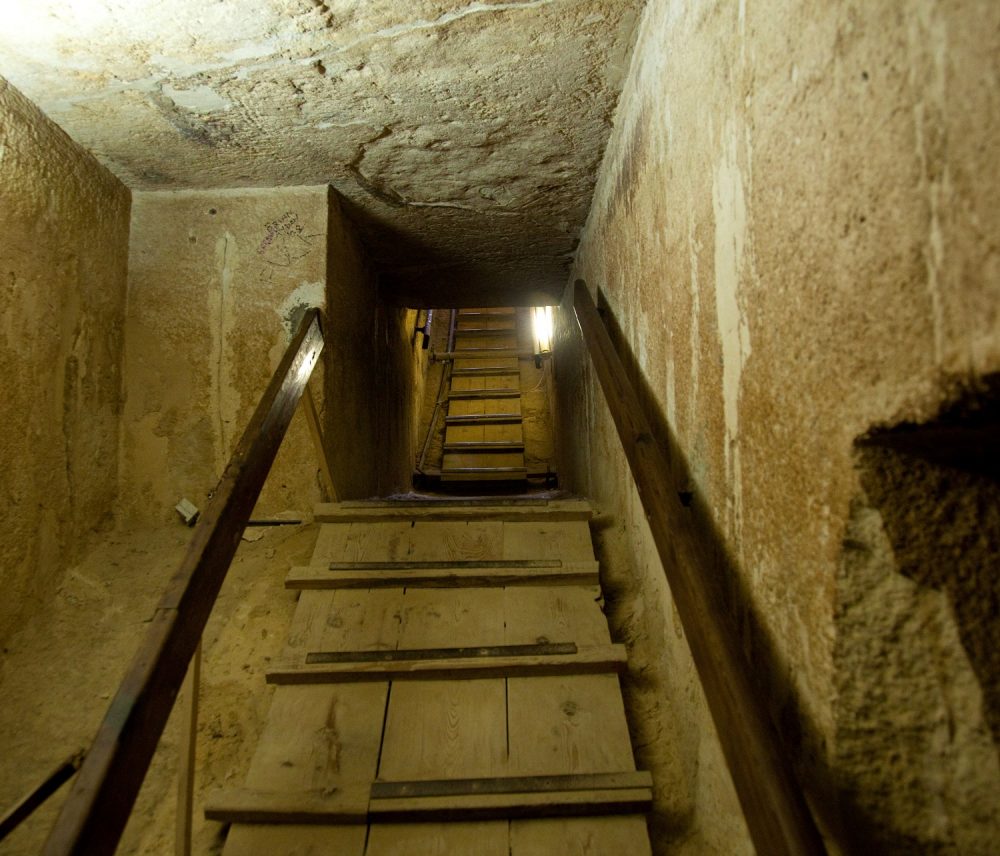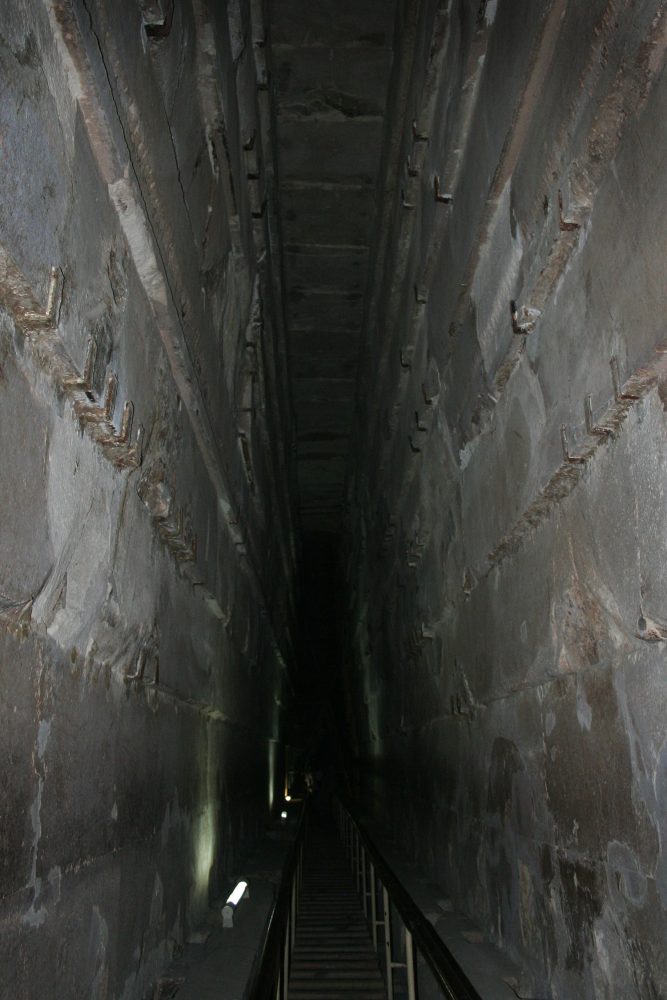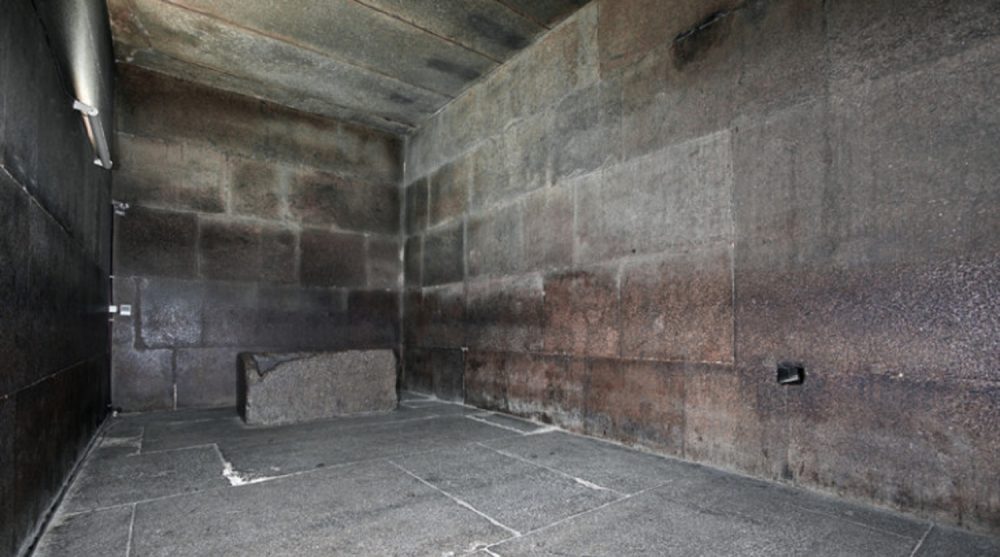That which lies inside the Great Pyramid is worthy of the greatest mystery.
Of all the pyramids that exist worldwide, the Great Pyramid of Giza captivates us the most. This is for different reasons. To some, the Great Pyramid of Giza left a huge impression because of its colossal scale. To others, its architectural perfection is unmatched. A third would say that the Great Pyramid is unique from all other pyramids because of the numerous mysteries surrounding its history. A fourth would say the Great Pyramid captives because we still cannot fully understand it.
Despite having studied the ancient Egyptian pyramids for hundreds of years, no one scholar can say with certainty how Egypt’s pyramids were built. Although scholars agree they were used as tombs, this idea has been greatly debated. If the Egyptian pyramids were tombs, why have the mummies of pyramid-building pharaohs such as Djoser, Sneferu, Khufu, Khafre, or Menkaure never been found? To answer this, experts say that the pyramids were entered into and looted in ancient times.
The abrupt building of the pyramid
The tomb robbers are thought to have emptied the pyramids, taking with them the treasures meant to serve the pharaoh in the afterlife and the mummified remains of the pharaoh. The missing Pharaoh mummies are just one of the countless enigmas that surround the pyramids of Egypt. The greatest, perhaps, is how these magnificent structures were built in the first place. For reasons scholars have not been able to explain, not one ancient text has been recovered from ancient Egyptian which details the pyramids’ planning, design, and construction. Scholars argue that Egypt’s oldest pyramid is that of Djoser, built during the Third Dynasty of Egypt some 4,700 years ago.
This pyramid came abruptly and suddenly in the history of Egypt. Never before was Djoser such a colossal project attempted by any Pharaoh. The Step Pyramid is thought to have completely revolutionized ancient Egyptian architecture. The Step Pyramid is considered the earliest colossal stone building in Egypt and one of the earliest large-scale cut-stone constructions in history.
The first Pyramid immense social implications
Scholars agree that if the pyramid was built around 4,700 years ago, then the social implications of such a massive and carefully sculpted stone structure are staggering. Experts acknowledged that erecting such a massive structure would be much more labor-intensive than any previous monument in Egypt. Although revolutionary in many ways, the Step Pyramid did not endure for long in Egypt. After Djoser, a few Pharaohs tried replicating the pyramid complex commissioned by Djoser at Saqqara but failed.
It wasn’t until the fourth dynasty Pharaoh Sneferu came to the throne, that Egypt was gifted with another pyramid. The Pyramid at Meidum was another example of early pyramid-building techniques in Egypt. Believed to have been constructed as an elongated Step Pyramid, the builders tried transforming the pyramid from a stepped structure to a smooth-sided one. However, it is believed that the project failed, and the pyramid’s outer casing collapsed. This did not stop Sneferu from building another pyramid.
The unique Bent Pyramid
The Bent Pyramid at Dahshur is one of the most unique pyramids ever erected in ancient Egypt, representing a transitional form between step-sided and smooth-sided pyramids. Of around 120 pyramids in Egypt, the Bent Pyramid is also notorious for being the one structure whose original polished limestone outer casing remains largely intact. The Bent Pyramid of Sneferu rises from the desert sand at a 54-degree inclination. However, the top part of the pyramid, just above 47 meters, was built at a shallower angle of 43 degrees, giving it its famous bent shape.
The Bent Pyramid was succeeded by the Red Pyramid of Sneferu, also at Dahshur. It is the most massive of the three major pyramids at Dahshur and is considered the first successful attempt to build a true smooth-sided pyramid. Thought to have been built in less than 17 years, the Red Pyramid rises to a height of 105 meters. With a total volume of 1,694,000 cubic meters (59,823,045 cu ft), the Red Pyramid is the third largest pyramid built in Egypt, after the Pyramid of Khufu Khafre at Giza.
The magnificent Red Pyramid
The Red Pyramid at Dahshur was, during the reign of Sneferu, the most perfect pyramid ever built in the history of Egypt. Revolutionary and massive, it would lay down the foundations for constructing the Great Pyramid of Giza. After Sneferu, his son Khufu took the throne of Egypt during the Fourth Dynasty. Early in his reign, the young king is thought to have commissioned a structure like no other: the Great Pyramid of Giza. Of the problems concerning the pyramids, their construction is the most puzzling.
This was so for the first pyramid, the pyramids of Sneferu, and eventually the Great Pyramid of Giza, the largest of all pyramids in Egypt. This monstrous structure is calculated to have been built with a staggering 2.3 million stone blocks. Measurements have revealed that the Great Pyramid of Giza weighs around 6.5 million tons. To build the Great Pyramid of Giza, its builders used more than 5.5 million tons of limestone, 8,000 tons of granite (imported from Aswan), and 500,000 tons of mortar. Some of the stones used to construct the Great Pyramid of Giza were massive.
How did they do it?
How the ancient builders managed to transport them from the quarries to the construction site and up the pyramid remains a profound mystery. This is believed to have been achieved without using technologies such as the wheel, pulley, or iron tools. Granite blocks located in the so-called King’s Chamber inside the Great Pyramid have been found to weigh several dozen tons. Somehow, spectacularly, the great Pyramid builders achieved building a monument with a total volume of 2,583,283 cubic meters (91,227,778 cu ft).
After completion, the structure was so massive that it remained the tallest human-made building for over 3,800 years. We don’t know how they did it since no ancient texts detailing the construction process are left behind. The only direct mention of the pyramid’s construction comes around 2,000 after the pyramid was built when the Greek writer Herodotus was compelled to write about the structure in his work “The Histories.”
What Herodotus wrote
As revealed by Herodotus:
The pyramid was built in steps, battlement-wise, as it is called, or, according to others, altar-wise. After laying the stones for the base, they raised the remaining stones to their places by means of machines formed of short wooden planks. The first machine raised them from the ground to the top of the first step. On this there was another machine, which received the stone upon its arrival and conveyed it to the second step, whence a third machine advanced it still higher. Either they had as many machines as there were steps in the pyramid, or possibly they had but a single machine, which, being easily moved, was transferred from tier to tier as the stone rose — both accounts are given and therefore I mention both. The upper portion of the Pyramid was finished first, then the middle and finally the part which was lowest and nearest to the ground.
Inside the Great Pyramid
Captivating as its exterior is today, although void of most of the pyramid’s highly-polished white limestones, the interior of the structure is magical. Since images speak a story of a million words, here are eight striking photographs taken from the inside of the Great Pyramid of Giza that show how captivating this ancient monument is.








Join the discussion and participate in awesome giveaways in our mobile Telegram group. Join Curiosmos on Telegram Today. t.me/Curiosmos





